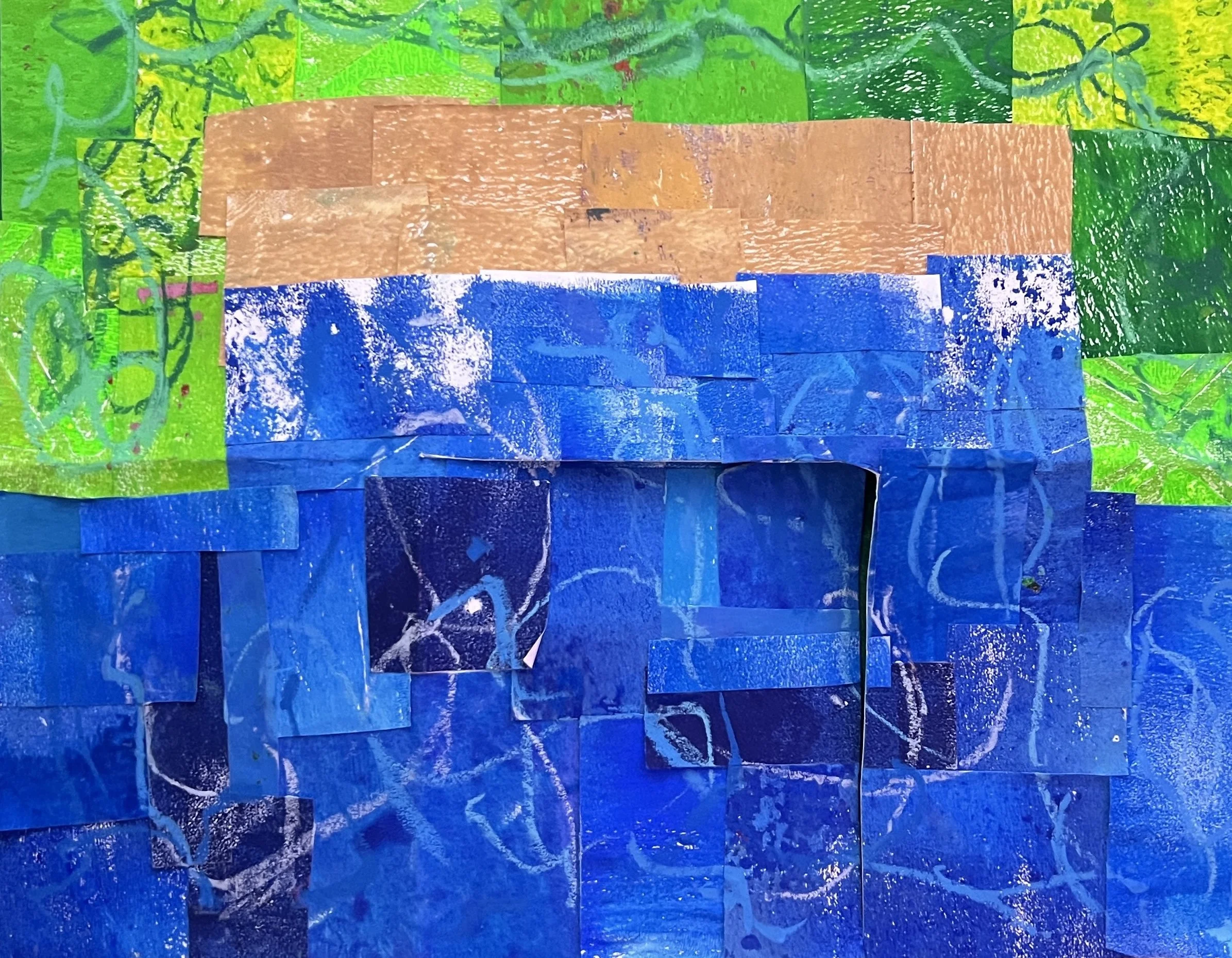What Is Bilateral Art and How Does It Help with Trauma?
Bilateral art is a creative practice that invites both sides of the brain to work together through bilateral movements. When incorporated into therapy and other healing practices, bilateral art can help to process emotions, memories, and insights and integrate traumatic memories.
What is Bilateral Art?
Bilateral art is a type of bilateral stimulation that uses both hands to draw, paint, or make other forms of visual art. Using both sides of the body during art-making helps stimulate the right and left hemispheres of the brain, fostering a more integrated and embodied experience. A form of nonverbal expression, bilateral art can help surface feelings, sensations, memories, and experiences that might be difficult to express with words alone. Bilateral, rhythmic, and repetitive movements also ground and relax our nervous system.
Believed to be first introduced in the 1950s by art therapist Florence Cane, bilateral art isn’t about creating a specific image. Instead, it focuses on spontaneous drawing and engaging the whole body in natural rhythms. Cane observed that engaging in large swinging movements enhanced creativity and supported grounding and regulation.
Understanding Trauma and Overwhelming Experiences
Bilateral Collage and Oil Pastels
Traumatic experiences overwhelm the nervous system, making it difficult for the brain to process them as cohesive memories. Instead of being stored as a clear story, these experiences often get fragmented, stored as sensations, images, and emotions. The body remembers what the mind struggles to put into words, leaving unresolved pieces of the experience filed away in a disorganized manner. As a result, environmental triggers can activate these fragments, causing emotional and physical responses that feel disconnected from conscious awareness. Over time, this can lead to feeling emotionally overwhelmed, hypervigilant, disconnected, and out of sync with emotions. As bilateral art helps to engage and connect both sides of the brain, it allows for deeper integration of these fragmented experiences.
How Bilateral Art Supports Healing
Used in trauma therapies like EMDR and Brainspotting, bilateral stimulation regulates the nervous system by promoting communication between both brain hemispheres, connecting the logical, analytical left brain with the emotional and intuitive right brain. This connection also assists in processing deep emotions and traumatic experiences stored beyond the reach of words. Bilateral art leverages this same principle with an added element of creative expression and sensory integration.
Benefits of Bilateral Art
Reduces anxiety and promotes relaxation
Allows for the exploration and processing of profound experiences without talking
It helps integrate unprocessed memories or emotions
Requires no artistic skills or experience
Easily accessible
Enhances creativity
How to Make Bilateral Art
To try bilateral art at home, you’ll need paper and something to draw or paint with - crayons, markers, paint, or oil or chalk pastels. You might experiment with different mediums to find what feels right or let your intuition guide you.
Bilateral Art Making with Oil Pastels
Using both hands at the same time, make marks on the paper. Allow yourself to draw and move until you feel it’s time to stop. There is no right or wrong way - you might draw one continuous image, change shapes, colors, cross sides of the paper, or even change the position you are drawing from (sitting, standing, vertical, horizontal). My favorite way to make bilateral art is with the paper taped to the wall or on a vertical easel.
As you create your artwork, approach yourself with curiosity and openness. You might bring your attention to how you feel in your body, the thoughts and memories that come to mind, or even what you smell, see, or hear as you make bilateral art.
What to Expect in a Bilateral Art Session with Crooked Tree Arts & Wellness
Bilateral Art Making with Oil Pastels - A Conversation with No Words
Sessions typically begin with talk therapy or coaching, allowing space to explore what’s present - emotions, thoughts, or sensations that need attention. We’ll work together to explore what’s important to you and identify a focus for bilateral art-making.
When ready, we’ll transition to bilateral art making. We might start with a grounding or resourcing activity or jump right into the issue that feels the most activating for you. I’ll encourage you to create freely, focusing on gestural mark-making and trusting your intuition. I might also invite you to try different movements or to notice various parts of your sensory experience. We might even incorporate bilateral music or your favorite song.
We’ll stop creating and explore what has emerged when it feels right. We might do this through reflection, dialogue, written expression, movement, and body awareness. In some sessions, we might alternate between periods of bilateral art-making and verbal reflection, or alternate between Brainspotting, Bilateral Art, and reflection. Integrating the approach between mind, body, and emotions can create space for new insights and healing.
If you’re ready to explore how bilateral art and the expressive arts can help, reach out today to get scheduled for a free 15-minute consult call or initial intake session.
Resources
https://www.psychologytoday.com/us/blog/arts-and-health/201509/bilateral-drawing-self-regulation-trauma-reparation
https://files.eric.ed.gov/fulltext/EJ776999.pdf
https://www.tandfonline.com/doi/abs/10.1080/26907240.2023.2218727
Cane, F. (1951). The artist in each of us. London: Thames and Hudson.




